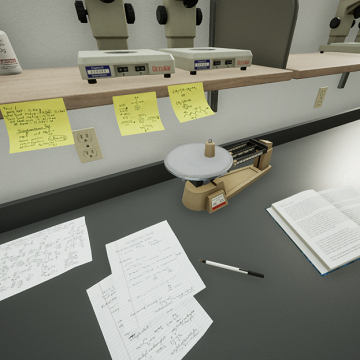Virtual Physics Labs
Complicated physics subjects are not a problem with virtual labs
New technologies have emerged as a response to the COVID-19 epidemic, one of them being the use of virtual
laboratories for schools and universities, more specific to the areas of science and engineering. It is known that in
these areas theoretical knowledge is as important as practical experience, and because of this need the laboratories
had to find a way of still being taught. Since they are so important to the formation of the students a solution was found: the use of
virtual laboratories. They allow the student to experience their practices as if they were physically in the lab, and this is
important in areas such a physics, were sometimes the concepts are somewhat complicated in theory, but much better understood
once you make an experiment and experience the results by manipulating the instruments. In this article we’re going to explore
the many benefits of virtual laboratories applied to the field of physics.
A virtual laboratory recreates the process and the end product of an experiment by using animation, and
it allows the users to control the experiment since it is fully interactive. It contains the necessary
instruments to achieve a practice, for example in the subject of physics, basic pulley systems are often
used in problems to calculate the tension in a rope, or to calculate the force caused by gravity on the
system, etc. These problems can be understood on paper, but they can also be easily simulated using a
virtual lab, giving the student a better understanding of the subject. By recreating this environment,
they can pull the rope with different forces and see how this affects the tensions, giving them the
opportunity to see in real time the applications of the theory they have learned, and given the
interactive characteristic of these laboratories they can feel less stressful than a physical lab,
because they aren’t really touching any expensive or dangerous equipment so the risk of causing any
accident is nonexistent, and because it is a virtual environment, they are most likely already familiar
with some of its use.
Another specific example in physics is the use of pneumatic pistons to calculate the acceleration and
velocity of a wood block. In a virtual lab the kind of motion that a pneumatic piston generates once it’s
activated can be simulated and putting a block with a specified mass at the end of it can give us the
simulation of this block moving across its path, which can be used to calculate its acceleration and velocity.
The pneumatic piston, the block and any other element necessary for this practice can be recreated in the
virtual environment, giving the student the sensation of actually being there and manipulating the objects
makes the more engaged in their learning.
These experiments make the students an active user in their education, by making them use
the instruments as if they were in the physical lab they can experience the theory that they
are being taught in the classroom, giving them a full understanding of their classes. In conclusion,
virtual labs are a great way of simulating real life experiments with their instruments for students,
and for physics it is a great way of visualizing theorems and theories that otherwise can be difficult
to understand or to imagine.
By Sofia Indira Calderón Alvarez
Contact Us













